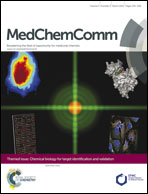Validation of host factors of HIV integration as novel drug targets for anti-HIV therapy
Abstract
There is continuous demand to search for novel and better antiretrovirals for a better control of the HIV pandemic with the hope of eventually inducing permanent remission of the disease. HIV relies on the host cellular machinery to complete its replication cycle. HIV hijacks several biological processes and protein complexes of the host cell through distinct virus–host protein–protein interactions (PPIs). Interactions between host cell and viral proteins during different stages of lentiviral infection can provide attractive new antiviral targets. These PPIs represent an attractive group of biologically relevant targets for the development of small molecule protein–protein interaction inhibitors (SMIPPIs). The insertion of lentiviral cDNA in a host cell chromosome is a step of no return in the replication cycle. Integration is carried out by integrase (IN), an enzyme also playing an important role during nuclear import. Plenty of cellular cofactors of HIV-1 IN have been proposed. To date the lens epithelium-derived growth factor (LEDGF/p75) is the best studied cofactor of HIV-1 IN. Moreover, small molecules that block the LEDGF/p75-IN interaction (LEDGINs) have recently been developed for the treatment of HIV infection. The nuclear import factor transportin-SR2 (TRN-SR2) has been proposed as another cofactor of HIV IN mediating nuclear import of the virus. Using both IN cofactors as examples, we will describe the approaches to be taken to identify and validate novel cofactors as new antiviral targets.


 Please wait while we load your content...
Please wait while we load your content...